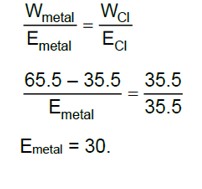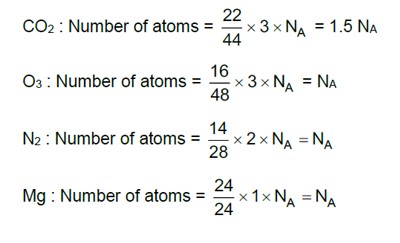Assertion (A) : Significant figures for 0.200 is 3 where as for 200 it is 1.
Reason (R) : Zero at the end or right of a number are significant provided they are not on the right side of the decimal point.
(i) Both A and R are true and R is correct explanation of A.
(ii) Both A and R are true but R is not a correct explanation of A.
(iii) A is true but R is false.
(iv) Both A and R are false.
Assertion (A) : Significant figures for 0.200 is 3 where as for 200 it is 1.
Reason (R) : Zero at the end or right of a number are significant provided they are not on the right side of the decimal point.
(i) Both A and R are true and R is correct explanation of A.
(ii) Both A and R are true but R is not a correct explanation of A.
(iii) A is true but R is false.
(iv) Both A and R are false.
-
1 Answer
-
This is a Assertion and Reason Type Questions as classified in NCERT Exemplar
Option (C)
In the decimal portion, only trailing or final zeros are significant. This is in accordance with the rules of significant figures.
The given number, 0.200 has 3 significant figures whereas the number, 200 has only one significant figure because zeros present on the right side or at the end of the decimal number are significant and it is provided that they are present on the right side of the decimal point.
Also, zeros are not significant in numbers without decimals. Thus, X is true but R is false.
Similar Questions for you
In the medical entrance test NEET, there can be 1 to 3 questions from this chapter. Some year, the Chemistry section of NEET has only one question from this chapter and in some other years, there can be 3 questions.
The following are the key concepts of this chapter: Compound, Elements, Rules, Law of conservation of mass, Addition and Subtraction, Atomic Mass, Law of multiple proportions, and Molecular Mass.
As the name suggests, the first chapter of the NCERT Class 11 Chemistry introduces various basic concepts of chemistry, such as the definition and importance of chemistry, atomic matter and molecular masses, the mole concept, laws of chemical combination, empirical, stoichiometry, and molecular formulas. It also includes the concepts of molarity and molality.
Taking an Exam? Selecting a College?
Get authentic answers from experts, students and alumni that you won't find anywhere else
Sign Up on ShikshaOn Shiksha, get access to
- 65k Colleges
- 1.2k Exams
- 679k Reviews
- 1800k Answers


